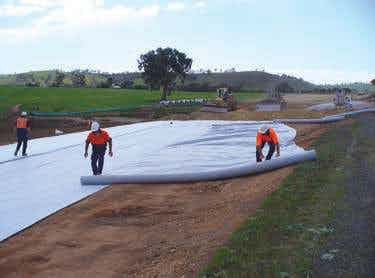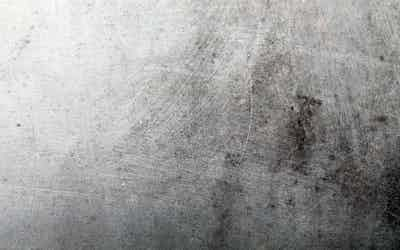4 Most Effective Waterstops for Concrete Construction Projects

If you work with concrete, you’ll know the importance of waterstops in preventing leaks and protecting structural integrity. With over 100 years of combined experience at Illawarra Industrial Supplies, we’ve seen firsthand how even small failures at concrete joints can quickly escalate into costly repairs, safety risks, and long-term structural damage. As a result, we’ve created this guide exploring the four most effective waterstops for concrete construction: PVC, hydrophilic (swelling rubber), metal, and bituminous.
You’ll learn how each type works, its key benefits, and where they’re best applied, so you can confidently choose the right solution for your project and have peace of mind that your structures are watertight.
Why Choosing the Right Waterstop Matters
As the name suggests, waterstops do exactly that—stop water. They act as barriers within concrete joints, preventing water from passing through. Because water infiltration can compromise structural integrity, waterstops are an essential part of waterproofing systems in engineering and construction.
Without them, joints are vulnerable, leading to leaks, reinforcement corrosion, safety hazards and, ultimately, extremely costly repairs.
There are five main types of joints in concrete construction:
- Cold Joints (construction joints): Formed when a new batch of concrete is poured against hardened concrete.
- Expansion Joints: Allow for the expansion and contraction of concrete due to significant temperature-related movements.
- Contraction Joints (control joints): Intentionally introduced during/after the pour to manage shrinkage cracking.
- Movement Joints (isolation joints): Separate different structural elements (e.g., slab from a wall, or foundation from a column).
On the regulatory front, Australian Standards such as AS 3600: Concrete Structures set strict durability and performance expectations for joints. Waterstops play a key role in meeting these requirements. As such, the choice of waterstop isn’t just about preference, but compliance and long-term performance. Selecting the right type ensures both structural integrity and a priceless peace of mind.
PVC Waterstops
Let’s start with the most common waterstops — PVC waterstops.
Description & How It Works
PVC waterstops are flexible strips embedded in concrete joints during pouring. They form a continuous barrier that prevents water ingress by physically blocking pathways through the joint.
Benefits & Limitations
PVC is popular because it is durable, flexible, chemical-resistant, and cost-effective. It’s widely manufactured and suitable for a broad range of projects. However, PVC waterstops can be harder to weld on-site, and performance depends heavily on correct installation. They need to be included in design as they are required to be placed into the first concrete pour of the joint.
Common Use Cases & Installation Tips
They work in a wide range of joint types (construction, expansion, contraction) and are commonly used in basements, retaining walls, and tanks. Ensure proper alignment, secure fixing, and heat-weld joints for a positive watertight seal.
Hydrophilic (Swelling Rubber / Bentonite) Waterstops
Mechanism & Material Behaviour
Hydrophilic waterstops are made from rubber compounds or bentonite that expand when exposed to water, automatically sealing joints. They are ideal for irregular surfaces as well as filling gaps caused by minor concrete movement.
Benefits & Limitations
Due to their expanding nature, they are flexible and easy to handle, making them ideal for small spaces, retrofits or tight joints. On the flip side, the rubber can be sensitive to premature water exposure and may be less effective in highly aggressive chemical environments.
Best Applications & Precautions
Best for construction joints, basements, concrete pilings and repairs. Just ensure surfaces are dry during installation and avoid overexposure to water before concrete placement.
Metal (Stainless Steel or Copper) Waterstops
Metal waterstops provide exceptional durability and strength in high-pressure and critical applications.
Durability and Strength Features
As metal waterstops are made from stainless steel or copper, they provide exceptional strength and resistance to hydrostatic pressure, chemicals, and extreme conditions. They also go the distance, forming a solid barrier within joints that withstands long-term structural stress.
Pros and Cons
The main pros include unmatched durability, reliability and longevity for high-pressure applications. Cons include higher material costs, limited flexibility, and the need for skilled installation, as these stops include welding or mechanical fastening.
Best Use Scenarios
Ideal for large and vital infrastructure projects like dams, reservoirs, sewage treatment plants, and chemical facilities where joint failure would be catastrophic.
How to Select the Right Waterstop for Your Project
While the previous information is a good indicator for use-types, here’s a quick checklist to help you decide which waterstop suits your project:
- Joint Type: Construction, expansion, contraction, or isolation.
- Movement: High-movement joints favour flexible rubber or PVC; low-movement joints may use PVC, metal, or bituminous.
- Water Pressure: High hydrostatic pressure requires durable materials like PVC or rubber; metal is reserved for critical infrastructure. Low-pressure joints can use hydrophilic or bituminous strips.
- Chemical Exposure: PVC or metal for aggressive chemicals; hydrophilic for standard conditions.
- Lifespan Requirements: Critical infrastructure often requires metal or durable PVC.
- Code Compliance: Ensure selected waterstop meets relevant standards (e.g., AS 3600).
This checklist allows quick assessment, ensuring you choose a waterstop that balances durability, flexibility, and cost.
Installation Best Practices & Common Mistakes
When planning a waterstop installation, it’s important to consider both the first concrete pour and the second concrete pour, ensuring the waterstop is properly positioned and secured between the two batches to create a continuous, watertight barrier at the joint. Here are some more installation tips:
- Ensure proper alignment of the waterstop within the joint
- Coordinate concrete placement sequence to prevent displacement
- Inspect all connections, welds, and overlaps thoroughly
- Verify compatibility with sealants or concrete admixtures
- Follow manufacturer guidelines for fixing and securing the waterstop
Common Mistakes to Avoid
- Misaligning waterstops within the joint
- Failing to secure the waterstop and not adhering correctly during the first concrete pour
- Leaving gaps at overlaps or joints
- Exposing waterstops to premature moisture before concrete placement
- Ignoring inspection and preparation, or skipping manufacturer installation instructions
Conclusion & Next Steps
By now, you can see that choosing the right waterstop type, whether it be PVC, hydrophilic or metal, depends on joint type, movement, water pressure, chemical exposure, and lifespan requirements. As such, it’s important to evaluate your project needs carefully to ensure watertight concrete joints and long-term durability. That’s why even the most experienced waterproofers receive expert advice, especially for critical projects. We’ve been offering expert guidance, knowledge and high-quality waterstop supplies since 1980. Contact Illawarra Industrial Supplies to get the job done right: Waterstops & Waterproofing Supplies.
FAQs
What are the most effective waterstops made of?
The most effective waterstop systems are typically various types made from PVC, rubber, metal, or hydrophilic materials, depending on the project requirements.
What are the different types of waterstops for concrete?
The main types include PVC, rubber, hydrophilic rubber (swelling), metal and bentonite.
What are the methods of waterstop?
Waterstops can be installed by embedding in fresh concrete structures for new construction, welding PVC or metal sections, or using self-expanding hydrophilic strips in joints. No matter the method, if they are not correctly embedded or fixed in the joint as intended, they will be ineffective.
- Date
- 19.09.2025
